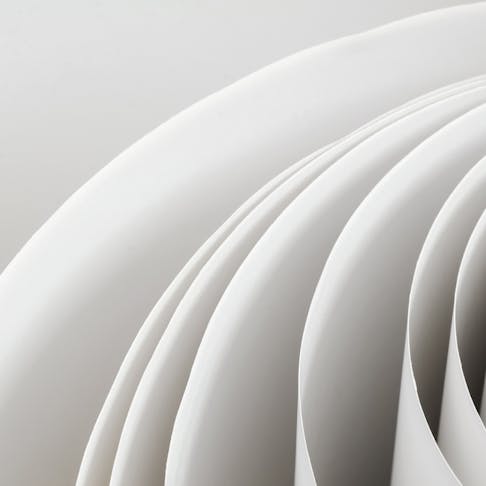Paper is a popular target for laser cutting. It is cheap and can be cut with very low-powered entry-level machines. The resulting products are primarily used for art applications since paper is not robust enough for much more.
Paper can be purchased in many different sizes and weights. The weight is usually defined in grams per square meter, or GSM — the mass of a 1-meter-square sheet of that particular paper style. Higher numbers indicate greater average sheet thicknesses.
This article will describe all the best paper for laser cutting and includes different types of paper like copy paper, bond paper, cardboard, and cardstock.
1. Cardboard
Cardboard is the general term used to describe a range of paper boards that are typically thicker and more durable than standard paper. It’s also sometimes referred to as kraft paper. Most cardboard is brown since it uses unbleached wood pulp. You can find it in all the standard printer paper sizes as well as custom sizes or large rolls. 100 sheets of 8.5" x 11" (ISO A4 Approximate) 420-GSM chipboard cardboard costs about $20. The cardboard is easy to laser-cut with the correct settings. Typical cardboard boxes are shown in Figure 1 below:

Warehouse full of cardboard boxes.
Image Credit: Shutterstock.com/Gorodenkoff
2. Cardstock
Cardstock is similar to cardboard but tends to have a higher quality. This is why it is often used for business cards and festive greeting cards. The material itself can sport many different textures and finishes like matte or gloss. Cardstock is supplied in standard ISO paper sizes such as A1, A2, A3, and A4. It can cost approximately $14 for 250 sheets of 8.5" x 11" (ISO A4 Approximate) 176-GSM cardstock. Like cardboard, cardstock is easy to laser-cut with the correct settings. Example cardstock sheets are displayed in Figure 2 below:
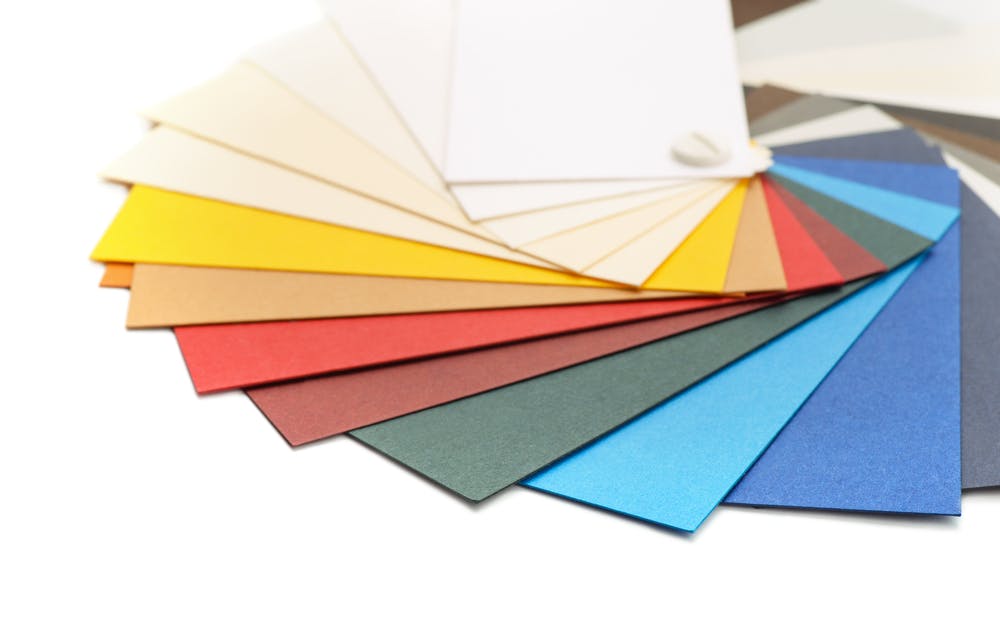
A stack of cardstock sheets in different colors.
Image Credit: Shutterstock.com/Anton Starikov
3. Copy Paper
Copy paper is specifically designed for use in printers and is optimized to accept printer ink from inkjet or laser printers. Remember that laser printing has nothing to do with cutting — it’s a method for applying ink. Copy paper is generally quite thin with a typical weight of between 90 and 120 GSM and is available in all the standard paper sizes such as A1, A2, A3, and A4. Usually, 500 sheets of 8.5" x 11" (ISO A4 Approximate) 90-GSM copy paper go for about $16. This paper is not ideal for intricate laser-cut projects as it is thin and burns easily. Typical copy paper reams are pictured in Figure 3 below:
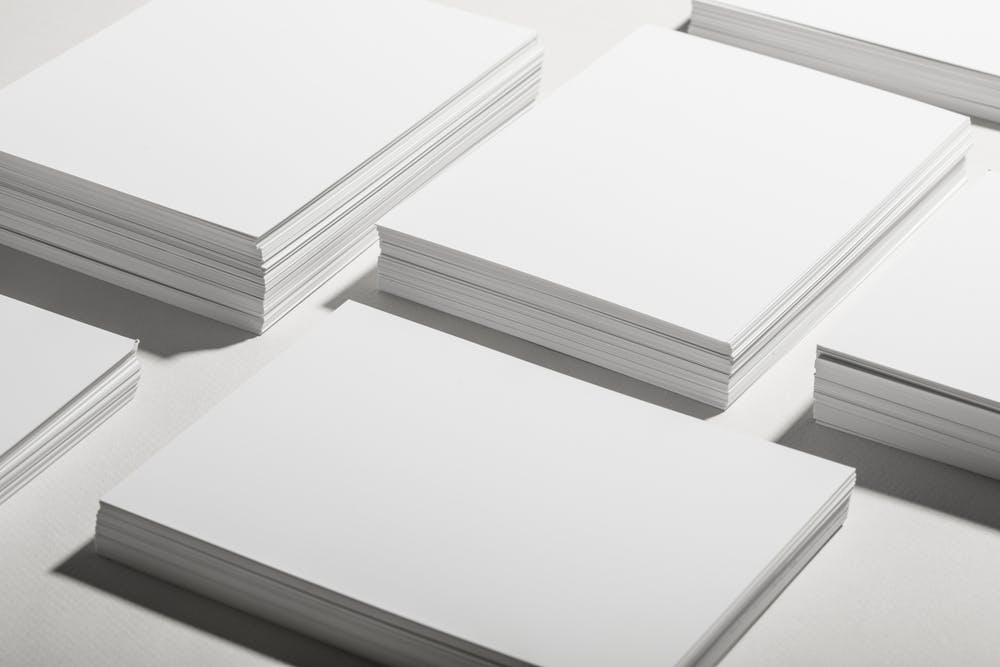
Copy paper reams.
Image Credit: Shutterstock.com/Sokor Space
4. Corrugated Cardboard
A standard corrugated board consists of a repeatedly bent sheet of cardboard glued between two sheets of flat cardboard (single-wall double-face board). In some cases, only one side has a sheet of cardboard and the corrugated side is exposed (single-face board). This version is more flexible. The corrugations act much like a truss structure, vastly improving the sheet’s strength. Corrugated cardboard is used extensively for packaging as it has an excellent strength-to-weight ratio. Corrugated cardboard can be sourced in many different sizes and thicknesses with heavier-duty cardboard having multiple corrugated layers. Corrugated cardboard is one of the best papers for laser cutting. It can cost approximately $25 for 200 5” x 7” (ISO B6 Approximate) sheets of 2-mm thickness. Laser cutters are very often used on this sturdy material. Typical corrugated cardboard sheets are shown in Figure 4 below:
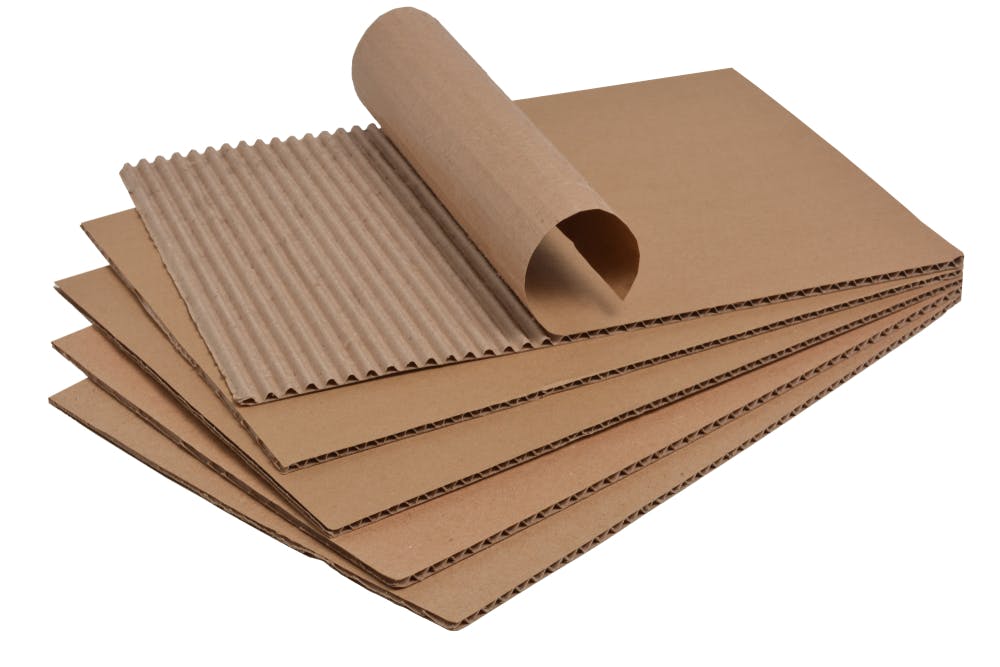
Corrugated cardboard sheets.
Image Credit: Shutterstock.com/Serhii Kalenichyi
5. Bond Paper
Bond paper is a type commonly used for business stationery items like letterheads and envelopes. It is heavier than standard copy paper and can be purchased in weights of 60, 75, and 90 GSM. The name bond paper historically refers to the fact that it was used to print US bonds. This paper is typically made from rag pulp and is therefore quite resistant to tearing and damage. You’ll spend approximately $9 for 100 sheets of 5" x 7" (ISO B6 Approximate) 120-GSM bond paper. Bond paper is easily laser cut with the correct settings and makes for a better option than copy paper. The envelopes in Figure 5 below are made of bond paper:

A stack of envelopes made of bond paper.
Image Credit: Shutterstock.com/Radovan Vujovic
6. Construction Paper
Construction paper is a type of low-quality stiff paper with a rough surface finish. This paper is available in many different colors and is typically used for art projects. A 100-pack of 9” x 12” (ISO C4 Approximate) sheets costs approximately $5.00. Construction paper can be laser-cut but is not considered high-quality paper and is not as durable as cardstock. Typical construction paper sheets are shown in Figure 6 below:
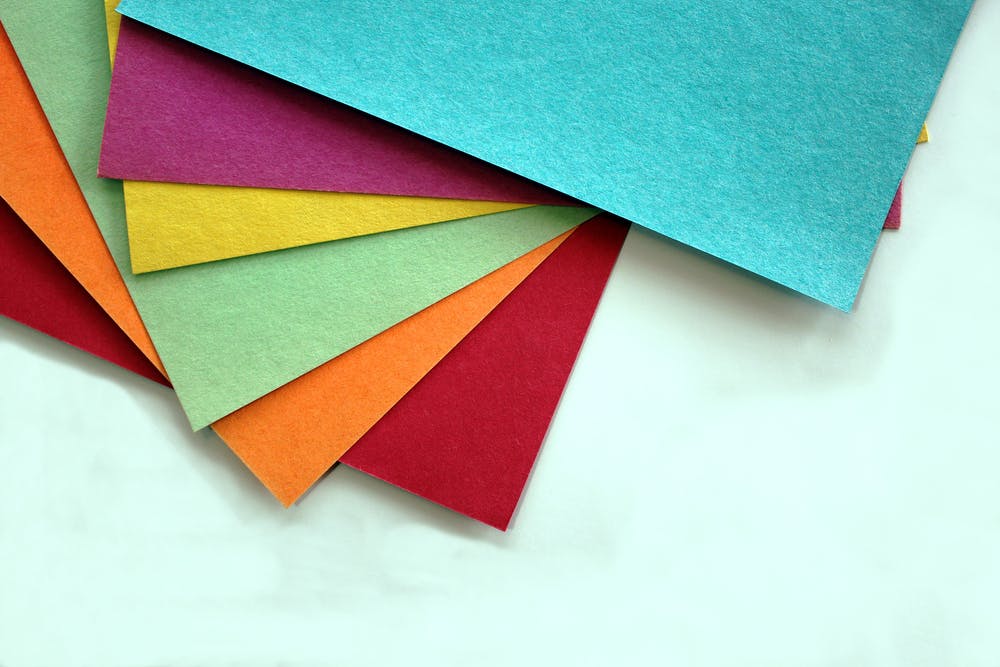
A stack of different colored construction paper.
Image Credit: Shutterstock.com/squiddles
7. Art Paper
Art paper is a general term for paper that is used for artistic purposes including: oil painting, watercolor painting, drawing, digital art prints, and illustrated books. It can be purchased with a matte, textured, or glossy finish. The price of art paper varies depending on its type; for example, 130-GSM drawing art paper can cost $18 for a pack of 100 9” x 12“ (ISO C4 Approximate) sheets. This is a high-quality paper that can be laser-cut without any major challenges. Typical art paper for painting is depicted in Figure 7 below:

Art paper on an easel.
Image Credit: Shutterstock.com/Ground Picture
8. Two-Ply Paper
The term two-ply paper is often used in conjunction with rolls of bond paper. This paper is produced in rolls and is often used for receipts. Two-ply bond paper is stronger than standard single-ply bond paper which is already more robust than standard copy paper. It can cost approximately $75 for 18 rolls of 3" x 95’ of 2-ply bond paper. This paper is not ideal for laser cutting as it has a curved form when it comes off the roll. Standard flat sheets of cardstock are better. Bond paper is typically supplied in rolls like those in Figure 8 below:
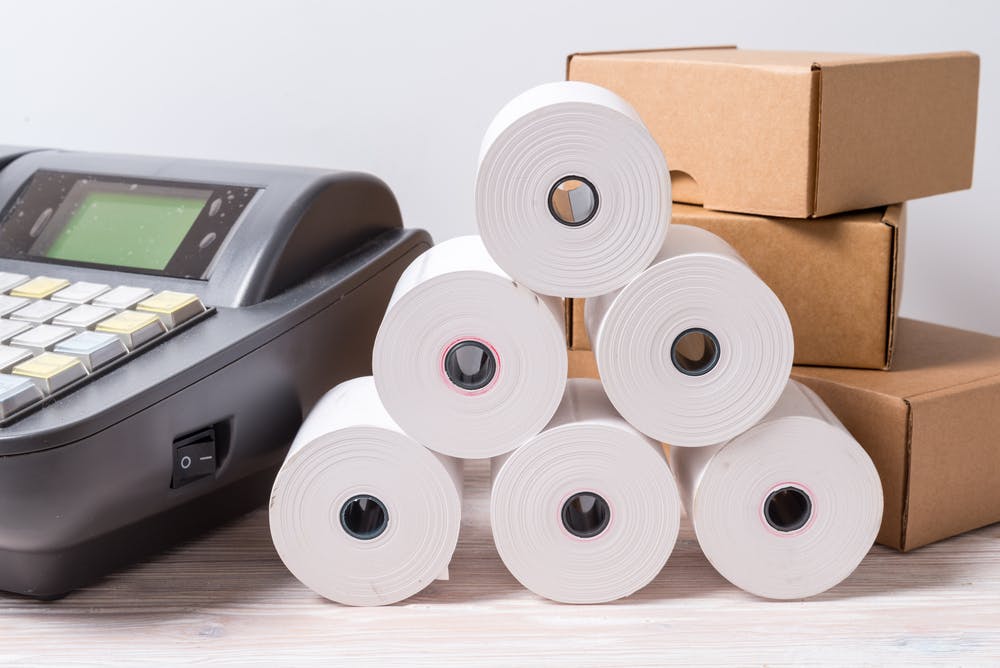
Rolls of cash register receipt paper.
Image Credit: Shutterstock.com/mdbildes
What Type of Cardboard Is Used for Laser Cutting?
Corrugated cardboard is the best paper for laser-cutting projects that require some structural strength. It is cheap, comes in various sizes and thicknesses, and can be easily cut and even engraved using lasers. The most common type of corrugated cardboard for laser cutting is a 2-mm-thick single-wall, double-face board.
What Is Laser Cutting?
Laser cutting refers to the process of cutting materials using a high-energy beam of light that is focused on a precise point. This focused light provides enough energy density to cut through the material — higher-powered lasers are even able to cut metal. A typical laser cutter can automatically move the laser to trace out the part to be cut without any user input apart from the initial setup. For more information, see our guide on What is Laser Cutting.
What Is Paper Laser Cutting?
Paper can be cut into functional or artistic designs using lasers. When laser-cutting paper — or even 3-mm-thick corrugated cardboard — a low-power laser of around 6 watts is sufficient. For more information, see our guide on How To Laser Cut Paper.
What Can You Do With Paper Laser Cutting?
Paper laser cutting is useful for a wide range of applications such as: greeting cards, customized labels, custom packaging, stencils for painting, sewing stencils, cardboard prototypes, and signs and labels. While paper is generally not a very durable material for practical applications, it can find extensive use for artistic and marketing purposes.
Why Use a Laser to Cut Paper?
A laser cutter can quickly produce highly detailed and accurate cuts that would be impractical for other cutting implements like scalpels. A laser cutter only needs some initial setup, after which the designs can be cut simply and repeatedly without any direct user input. Corrugated cardboard or cardstock is generally the best paper for laser cutting.
How to Laser Cut Paper
Paper has a very low ignition point that can easily be reached during laser cutting. As such, care must be taken to prevent the paper from igniting. To successfully laser-cut paper, follow the steps listed below:
- Make sure that your digital art design is in vector format. If the design is only available in a raster format like .bmp, use a free software package like Inkscape to convert the design into a vector format. If possible, use designs that already come in a vector format, i.e. with a .svg file extension. The .svg file type makes it easy to convert the edges into paths for the laser cutter to follow. Vector images can also be scaled without a loss in image quality.
- Select the correct laser power and speed based on the type of paper you intend to cut. Paper can easily burn, so the power must be carefully selected. If there is any uncertainty in terms of the required power, first cut a small sample piece that will not pose a risk to the machine if it catches fire. A 3-mm piece of corrugated cardboard typically needs only a 6-W laser and a speed of 8.5 mm/s.
- Secure the paper to the base of the machine's cutting bed so the sheet won’t get blown out of position. Once cutting is complete, the paper can be removed for immediate use. Observe the first cutting process (with the proper eye protection) to make sure it doesn't catch fire.
Is There a Type of Paper That Cannot be Laser Cut?
Yes, any paper that is too thin (tissue paper, for example) cannot be laser-cut. Thin paper can very easily burn or curl when exposed to a laser’s heat. Thermal paper is also not recommended as it will change color when exposed to heat. Corrugated cardboard or cardstock is generally the best paper for laser cutting.
Can I Make a Customized Cut Paper?
Yes, laser cutting is excellent for producing customized paper shapes, especially if the designs are complex and intricate.
Can I Use Laser Cutting for Various Types of Papers?
Yes, laser cutting can be used on a wide range of paper types. Just choose the proper laser power such that it won’t ignite the paper. Corrugated cardboard or cardstock is generally the best paper for laser cutting.
Can You Make Art From Paper Using Laser Cutting?
Yes, art is one of the primary uses for laser-cut paper. Lasers can create very intricate and detailed designs in a wide variety of paper types. Laser-cut paper can take on forms that would be impossible using other techniques.
Can You Laser Engrave Cardstock?
Yes, you can laser engrave cardstock. However, it is very important to set the laser power correctly to prevent the laser from burning through the cardstock. Laser engraving on colored cardstock produces high contrasts which make the engraved sections stand out.
Summary
This article presented eight different types of paper for laser cutting, explained what they are, and discussed the applications of each type. To learn more about types of paper for laser cutting, contact a Xometry representative.
Xometry provides a wide range of manufacturing capabilities, including sheet cutting and other value-added services for all of your prototyping and production needs. Visit our website to learn more or to request a free, no-obligation quote.
Disclaimer
The content appearing on this webpage is for informational purposes only. Xometry makes no representation or warranty of any kind, be it expressed or implied, as to the accuracy, completeness, or validity of the information. Any performance parameters, geometric tolerances, specific design features, quality and types of materials, or processes should not be inferred to represent what will be delivered by third-party suppliers or manufacturers through Xometry’s network. Buyers seeking quotes for parts are responsible for defining the specific requirements for those parts. Please refer to our terms and conditions for more information.

